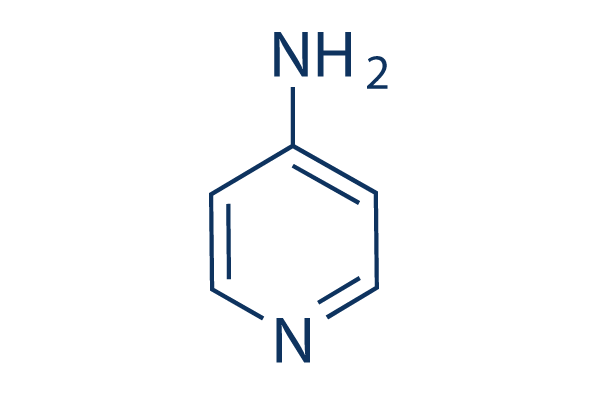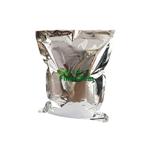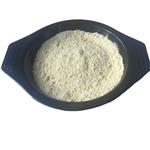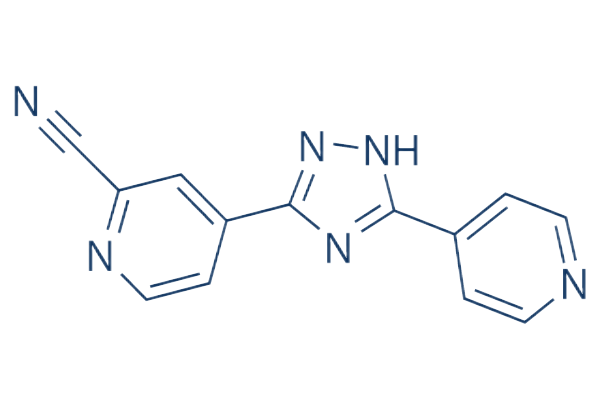4-Aminopyridine Applications and Interactions
Jan 9,2024
Applications of 4-Aminopyridine
4-Aminopyridine (4-AP) is a K+ channel blocker used clinically as symptomatic treatment for demyelinating disorders such as spinal cord injury or multiple sclerosis. 4-AP improves visual function and motor skills, and reduces fatigue in MS patients. Its extended-release formulation (fopodine) has been approved for the symptomatic treatment of walking disorders in ms. It is also used as a bird poison.

As an antagonist of voltage-gated potassium (Kv) channels, 4-aminopyridine (4-AP) is used as symptomatic therapy in several neurologic disorders. The improvement of visual function and motor skills and relieve of fatigue in patients with MS have been attributed to 4-AP. Its prolonged release formulation (fampridine) has been approved for the symptomatic treatment of walking disability in MS. The beneficial effects were explained by the blockade of axonal Kv channels, thereby enhancing conduction along demyelinated axons.
4-Aminopyridine, a K+ channel blocker, evoked phasic contractions in the caudal duct of the rat epididymis. The 4-aminopyridine-induced contractile response was either inhibited or prevented by the alpha 1-adrenoceptor antagonists, prazosin (IC50 = 2.7 nM) and benoxathian (IC50 = 14.6 nM). Blockers (1 microM) of alpha 2-adrenoceptors and purinoceptors but not of beta-adrenoceptors or muscarinic receptors caused a small but statistically significant reduction of the 4-aminopyridine-induced response. 4-Aminopyridine lost its ability to induce contractions after noradrenergic nerves had been destroyed by 6-hydroxydopamine. In addition, protriptyline and xylamine, blockers of noradrenaline uptake, also inhibited the 4-aminopyridine-induced contractile response.
However, other putative K+ channel blockers (tetraethylammonium ion, quinine, quinidine and glibenclamide) did not cause the muscle to contract. These findings demonstrate that the 4-aminopyridine-induced release of noradrenaline and adenosine 5'-triphosphate as co-transmitters results from membrane depolarization due to 4-aminopyridine blockade of K+ channels in noradrenergic nerve terminals. The 4-aminopyridine-sensitive K+ channels might thus play a physiological role in regulating the nerve membrane potential and neurotransmission in the rat caudal epididymis.
Interactions of 4-Aminopyridine
To elucidate the interaction of 4-aminopyridine with neostigmine and pyridostigmine, the authors studied 57 anesthetized surgical patients using a technique of constant infusion of pancuronium to quantitate antagonist activity. 4-Aminopyridine, 0.15 or 0.35 mg/kg, produced no antagonism, while 0.5 mg/kg produced a mean 24 +/- 6 per cent (peak) antagonism. The dose that produced 50 per cent antagonism (ED50) of neostigmine alone was 22 micrograms/kg; with 0.35 mg/kg 4-aminopyridine, it was 7 micrograms/kg. The ED50 of pyridostigmine alone was 110 micrograms/kg; with 0.35 mg/kg 4-aminopyridine, it was 27 micrograms/kg. 4-Aminopyridine prolonged the onset times of both neostigmine and pyridostigmine, but prolonged the duration of action of neostigmine only. At a given level of antagonism of pancuronium, adding 4-aminopyridine 0.35 mg/kg, to neostigmine and to pyridostigmine decreased the amounts of atropine needed to prevent a change in heart rate by 68 and 70 per cent, respectively. The conclude that 4-aminopyridine potentiates antagonism of a pancuronium-induced neuromuscular blockade by neostigmine or pyridostigmine. Also, less atropine is needed to prevent cardiac muscarinic stimulation when 4-aminopyridine is used with either neostigmine or pyridostigmine.
References:
[1] MICHAEL DIETRICH; Philipp A; Hans Peter Hartung. Neuroprotective Properties of 4-Aminopyridine.[J]. Neurology® Neuroimmunology & Neuroinflammation, 2021. DOI:10.1212/NXI.0000000000000976.
[2] HUANG Y. 4-Aminopyridine-induced phasic contractions in rat caudal epididymis are mediated through release of noradrenaline.[J]. European journal of pharmacology, 1995. DOI:10.1016/0014-2999(95)00253-h.
[3] R D MILLER. 4-Aminopyridine potentiates neostigmine and pyridostigmine in man.[J]. Anesthesiology, 1979. DOI:10.1097/00000542-197905000-00008.
- Related articles
- Related Qustion
- Toxicity of 4-Aminopyridine Nov 5, 2021
Avitrol is the most popular avicide that is registered at the US Environmental Protection Agency for the control of certain pest birds that feed on cattle feedlots, field corn, wheat, sorghum, sunflowers, peanuts, pecans, grain, feed proces
4,4'-Methylenedianiline(MDA) is primarily used to produce 4,4-'methylenedianiline diisocyanate and other polymeric isocyanates which are used to manufacture polyurethane foams.....
Dec 10,2024Organic ChemistryTopiroxostat, a selective xanthine oxidoreductase inhibitor, is used in Japan for the treatment of hyperuricemic patients with or without gout.....
Jan 9,2024Inhibitors4-Aminopyridine
504-24-5You may like
- 4-Aminopyridine
-

- $5.00 / 25kg
- 2025-09-02
- CAS:504-24-5
- Min. Order: 1kg
- Purity: ≥99%
- Supply Ability: 50mt/year
- 4-Aminopyridine
-

- $0.00 / 25Kg/Drum
- 2025-09-01
- CAS:504-24-5
- Min. Order: 1KG
- Purity: 99%min
- Supply Ability: 1000KGS
- 4-Aminopyridine
-

- $0.00 / 25KG
- 2025-08-08
- CAS:504-24-5
- Min. Order: 1KG
- Purity: 99%
- Supply Ability: 50000KG/month






